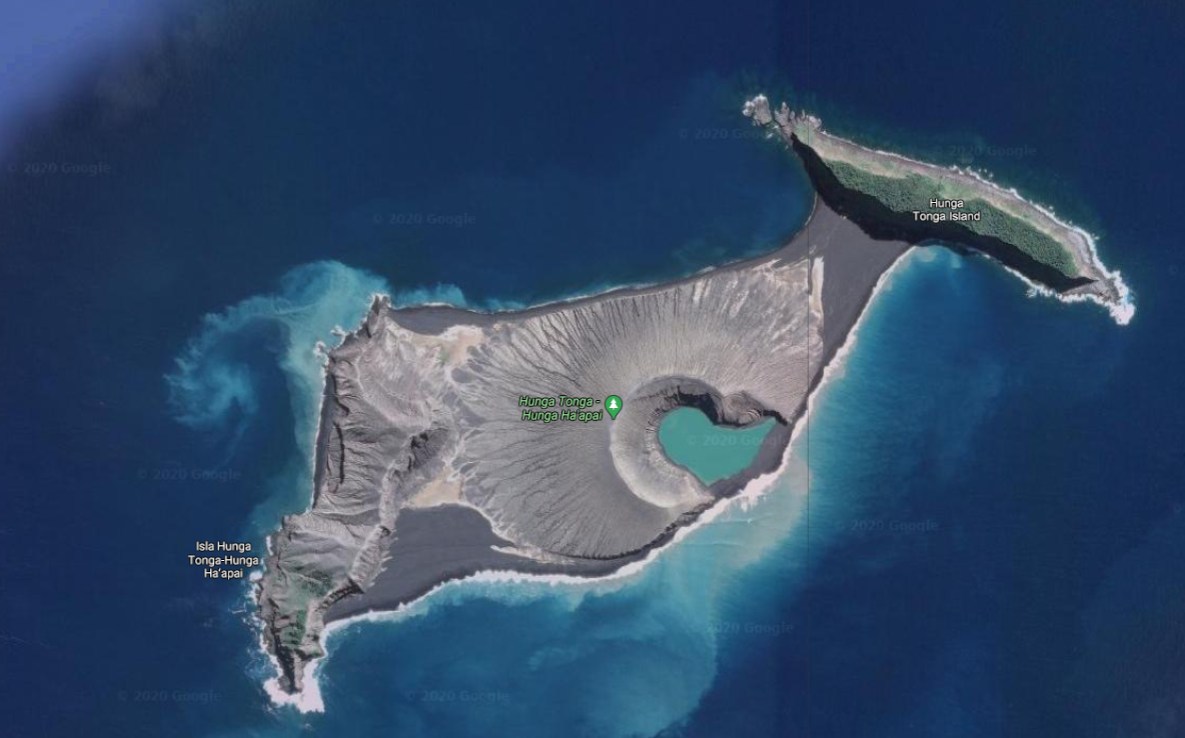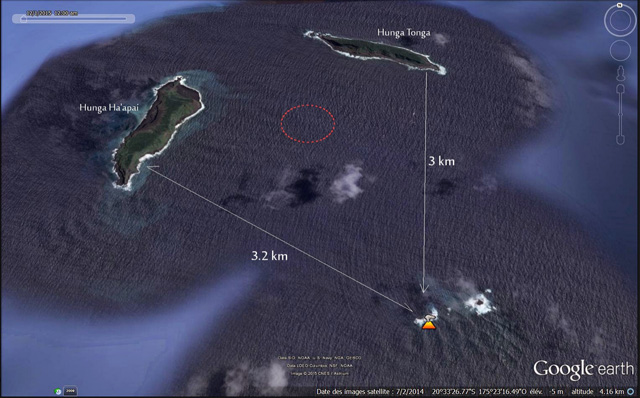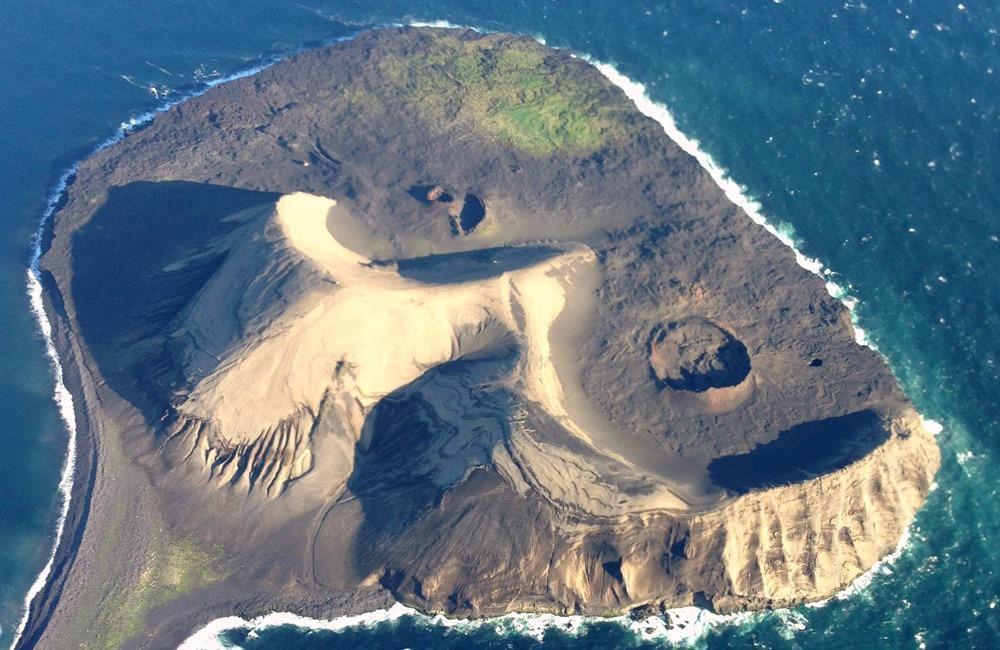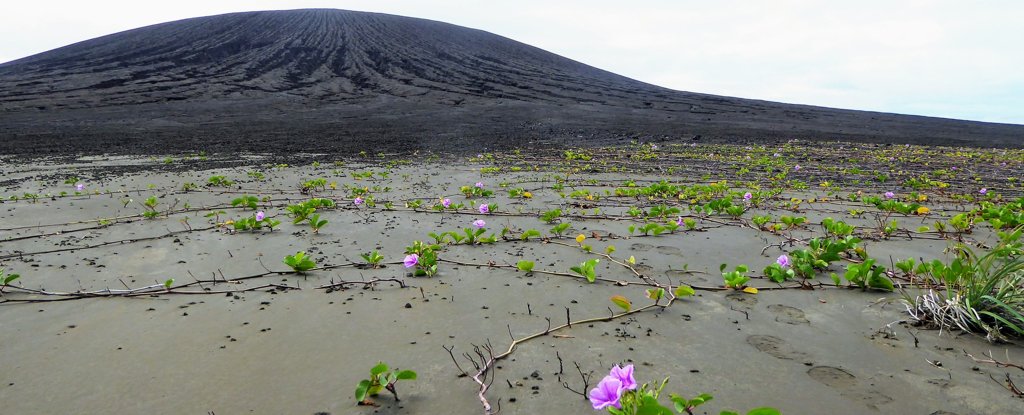In early 2015, a volcanic eruption occured in the South Pacific within the Kingdom of Tonga, and a new island was formed: Hunga Tonga-Hunga Ha’apai [see on Google Maps].
It was a beautiful, alien-looking world acting like a bridge between two existing islands, Hunga Ha’apai in the West and Hunga Tonga in the East, hence Hunga Tonga-Hunga Ha’apai.

Hunga Tonga – Hunga Ha’apai
Most of the time, these “new” islands that are created by volcanic eruptions never last very long. And it looked like Hunga Tonga-Hunga Ha’apai would follow the same route: for the first 6 months of its existence, erosion was rampant and taking away from much of the island. But then the island stabilized, and has remained somewhat the same to this day, almost 6 years later.
If you except Surtsey, and island formed in 1967 North of Iceland, no island created in human memory had ever lasted that long, and allowed us to study it so thoroughly.
As you can see, both islands look somewhat similar – both are incredibly beautiful and strange if you ask me.
Beyond the scientific value of such an opportunity – studying the birth and evolution of a brand new island in real time – what I find extraordinary about this event is that it’s a reminder of the earth’s geological time. The earth’s pace is inhuman: changes occur so slowly and randomly that generations of humans can hardly witness it.
Now scientists expect Hunga Tonga-Hunga Ha’apai to last another 30 years at best; recent observations indicated a quick erosion due to heavy rainfall. But that’s just a snapshot of what we know now: a few years ago, we thought the island wouldn’t see 2016. It’s hard to predict how all the elements will interact together – erosion, time, volcanic activity, who can predict the future? This island highlights all the knowledge we lack about the dynamic forces at play in the creation and destruction of worlds. In the meantime, life has immediately colonized the island. Another wonder is being able to witness the inescapable juggernaut of life: given a new playground, life will immediately colonize and occupy it, adapt to whatever conditions it finds.
Dan Slayback, a NASA scientist who visited the island in early 2019, witnessed this incredible force of life. Birds from nearby islands came to nest on Hunga Tonga, their droppings fertilized the soil. The sea water interacted with the ash in such a way that seemed to have made the island more resistent to erosion. “Clay mud” was present on the island, although they’re not sure how it came into being. Whatever happens, being able to witness how young worlds evolve chemically and geologically seems to have the potential to teach us a lot about how different forces interact, and develop better predictive models – here on Earth and maybe on other planets.



